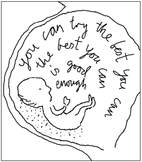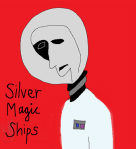
“[A] rich mixture of foreign influences
has entered our homes for centuries
and continues to do so today.”
So says the introductory panel to the exhibition “At Home With the World”. This is the title of the Geffrye Museum’s contribution to the laughably labelled “Cultural Olympiad”. The temporary display seeks to explore notions of Englishness in the domestic sphere. What – if anything – is nationally distinct about the homes of England given the ongoing patterns of “foreign influence” that pervade our public and private spaces?
This question resonates with a line of dialogue from a play that I am going to see later this evening just up the road from the Geffrye Museum:
“All I want is the England I used to know...
When you knew where you were and
all the houses had gardens and
old ladies could feel safe in the street at night.”
This understandable nostalgia is ratcheted into a gleefully xenophobic rant by a mild mannered man who goes by the name of Martin Taylor. He must surely be the most compelling and controversial character conjured up by the playwright, Dennis Potter.
His play, Brimstone and Treacle charts how monstrous Martin wheedles his way into the moribund home of the Bates family. Tensions between the unhappily married Mr and Mrs Bates are exacerbated by the condition of their tragic daughter, Pattie. She lays bedridden and brain damaged following a traffic accident.
Martin decides to quite literally lend a hand. The nature of his grotesque physical intervention led to the censorship of Potter’s Brimstone and Treacle.
Potter wrote his television play for the BBC some four decades ago. Time, however, has not diminished the shocking denouement of the drama.
So it is with a growing sense of guilty excitement that I sit in the sun-drenched café of the Geffrye Museum writing these words and waiting impatiently for the drama to unfold.
Until now I have only ever seen Potter’s work through the mollifying medium of television. The chance to come within touching distance of Dennis’ devilishly disturbing world has brought me to London and the Arcola Theatre in Hackney.
As luck would have it, the last leg of my journey to the theatre involved the number 149 double-decker bus from London Bridge station. It strikes me that the loathsome Norwegian terrorist, Anders Behring Breivik should be compelled to serve out his life sentence on this bus route. He’d be driven out of his miniscule mind by the glorious microcosm of London life that is played out by a worldwide cast of bus passengers, 24-hours a day.
If it were not for the number 149 I wouldn’t have passed by the Geffrye Museum. This marvellous museum has provided the ideal preparation for Brimstone and Treacle. As a “museum of English homes and gardens”, it is filled with stage-set interiors charting a chronological sweep through English domestic history.
The Bates’ morose middle class abode of the mid-1970s would fit in beautifully as one of the room sets of the Geffrye Museum.
These museumified interiors confirm our collective obsession with “home”. Many people share the sentiments of Mr Bates: they long for a private refuge from the world flanked by a neat little garden and a street outside filled with safe-and-sound old ladies. Of course, these exact same private paradises are all too often the setting for all manner of barbarisms perpetrated by “sweet talking rapists at home”.(1)
The domestic sphere is, then, a potent mixture of brimstone and treacle. Dennis Potter makes this shockingly apparent in his brilliant play of that title. I really hope that the Arcola Theatre does justice to Potter’s helping of demonic hospitality.
___
Note
(1) The Blow Monkeys, “Sweet Talking Rapist at Home”, Whoops! There Goes the Neighbourhood, 1989, RCA.






